Every Principles of Microeconomics course includes a diverse set of students and topics. Students from various demographic and educational backgrounds are confronted with a wide range of economic terms, potentially for the first time in an academic setting. These economic terms and principles may be intimidating for some students, but MobLab’s experiments, games, and class management features provide them with the tools to grasp abstract microeconomics concepts (such as Supply & Demand and Opportunity Cost) with examples that they can relate to in their everyday lives. Two of our most popular games for principles of microeconomics are available as in-class experiments or for asynchronous Online Assignments: Competitive Market (Double Auction) & Comparative Advantage. Let us introduce you to these microeconomic experiments:
Competitive Market (Double Auction) –
In this game, MobLab divides the economics students into markets made up of buyers and sellers. Sellers are given a number of oranges with an increasing cost schedule which they need to sell at the market. Buyers are present to purchase these delicious oranges with a diminishing value schedule. Students seek payoffs from the experiment by either selling above cost, or buying below their value. Let the trading fun begin! To learn more about the experimental market rules see our video instructions. This game is our most popular experiment in microeconomics classes!
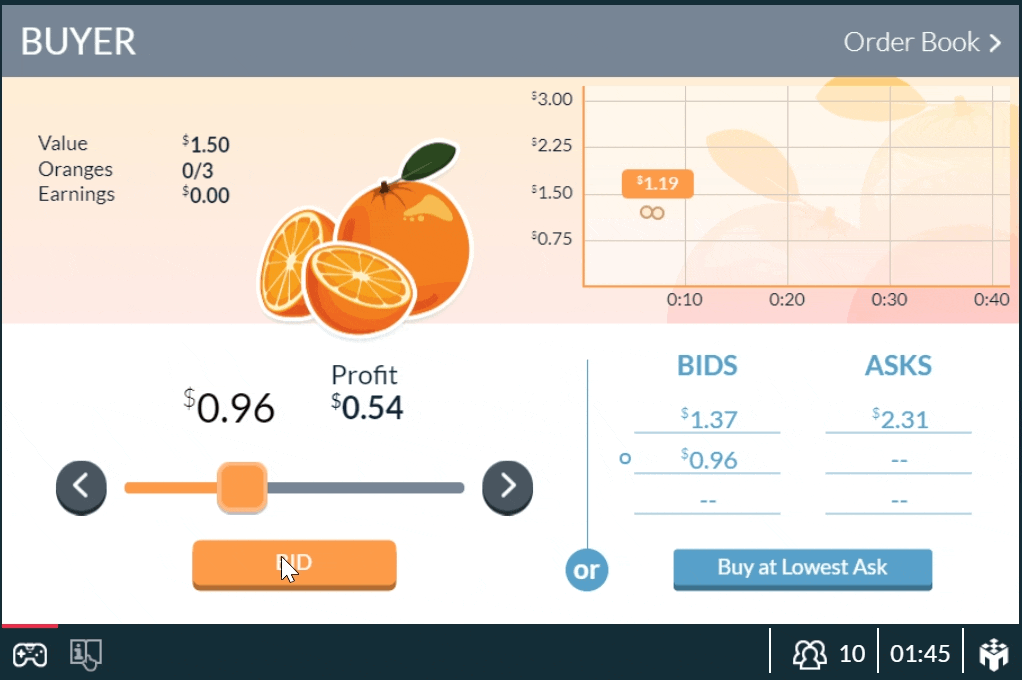
After the trading period has finished and the market has cleared, debrief your students and show them how markets are able to reach equilibrium prices. Watch as the “invisible hand” leaps off the pages of the microeconomics textbook and into the minds of your students through this classroom experiment.
Sample Microeconomics Class Results: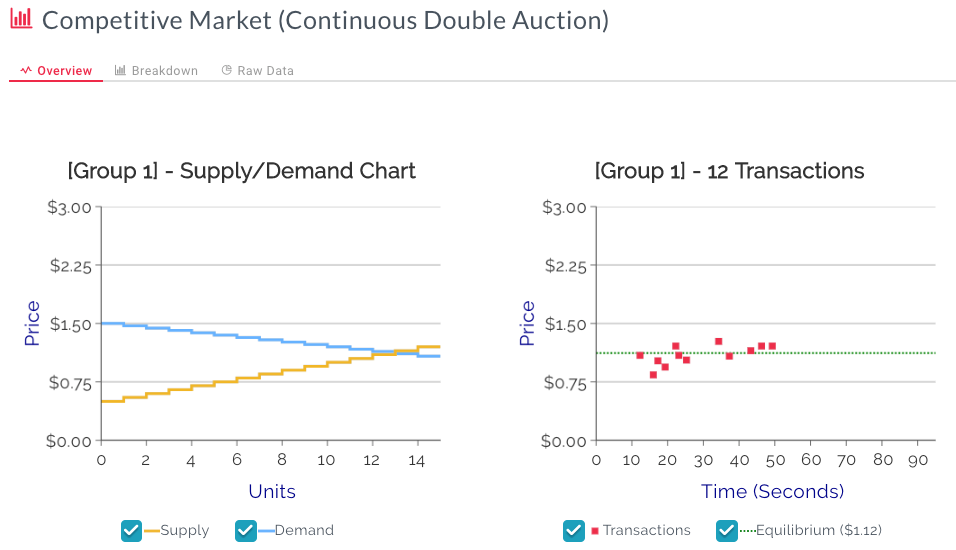
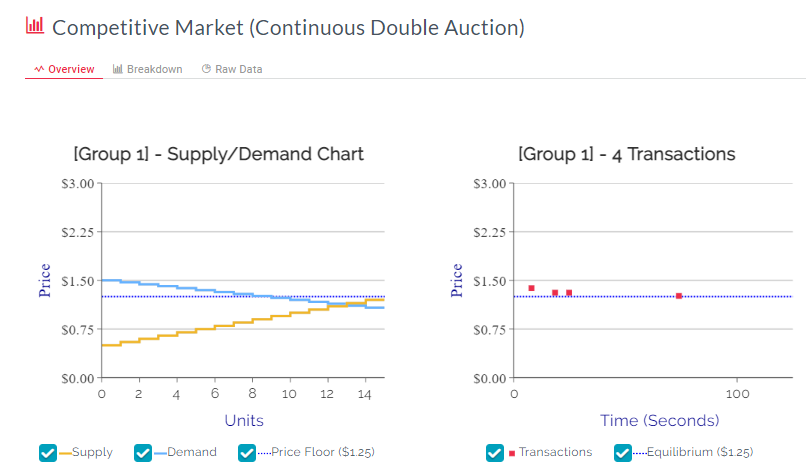
Comparative Advantage –
Learn if your students are able to get past economic competition towards mutually beneficial economic cooperation. If you run this game in your microeconomics course, your students will be grouped in pairs, each one operating a food truck producing burgers and fries. Customers in our experiment are picky eaters and will only order combos, so a student’s payoff depends on the total number of combos available. In other words, the smaller number of either fries or burgers will determine the number of combos. MobLab recommends running this experiment in two treatments for microeconomics classes: one without trade and the other with trade. The difference in experience will help students understand opportunity costs, specialization, comparative advantage, and gains from trade. After this memorable lunch experience, these key microeconomics concepts will be ingrained.
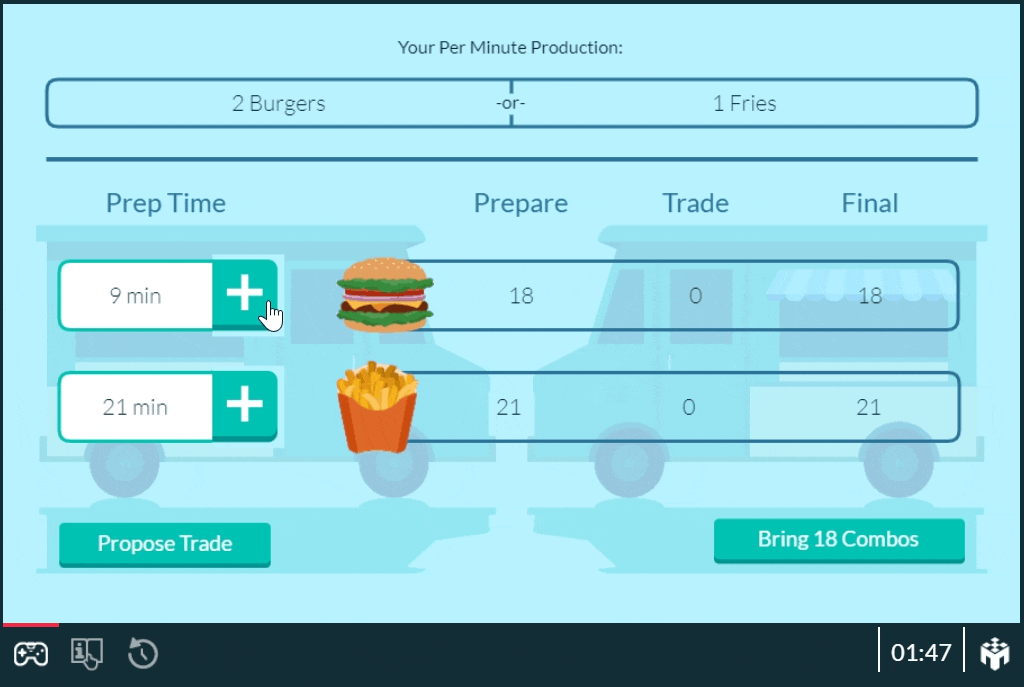
After the game, your students can learn about the economic concept of the production possibilities frontier (PPF) and how trading enabled both trucks to produce combos beyond their individual means - a world of economic cooperation rather than economic competition! The comparative advantage experiment is an effective way to answer the question: How can I benefit from trade?
Sample Microeconomics Class Results:
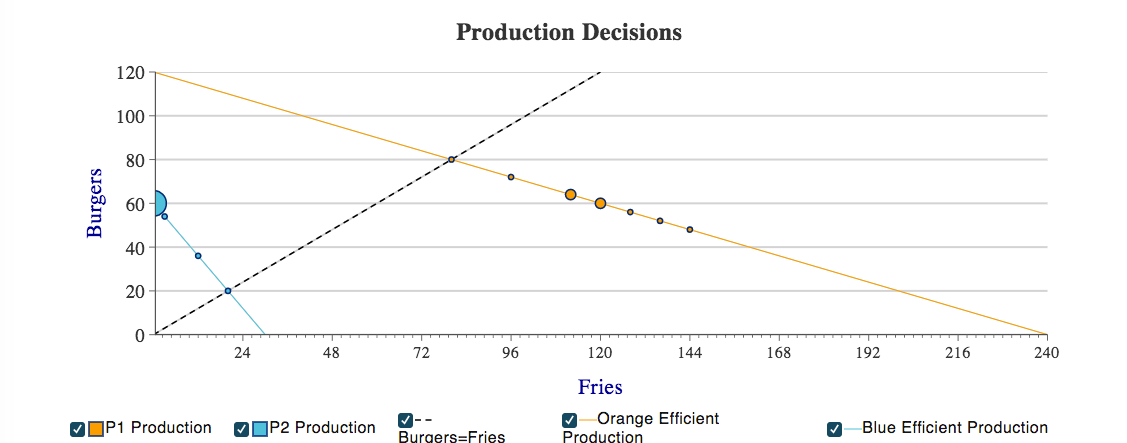
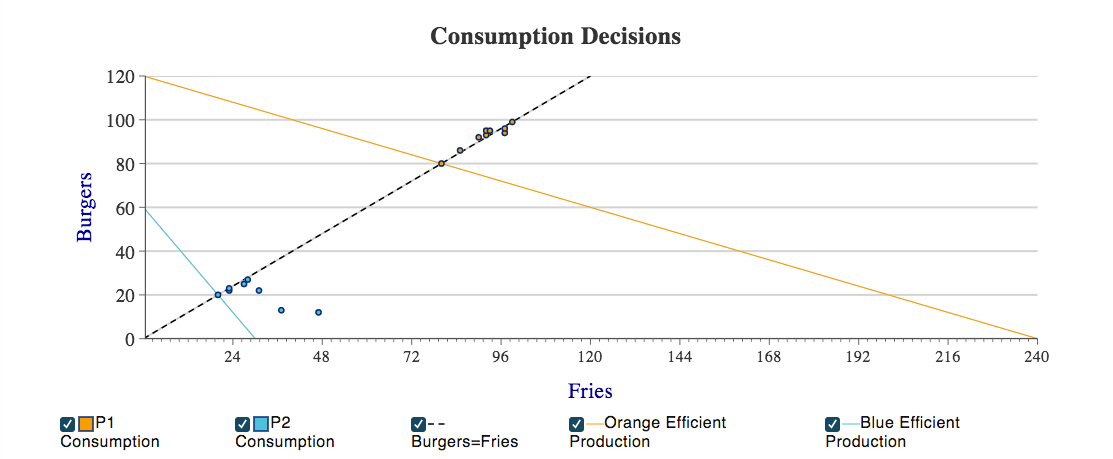
The Comparative Advantage experiment results display both the production decision (how many fries and burgers the food trucks produced) and the consumption decision (the number of combos they brought onto the truck). The difference between the two allows for debriefing the students on how they were able to increase their consumption through gains from trade.
Running both the Competitive Market (Double Auction) & Comparative Advantage experiments in your microeconomics course are effective ways to introduce economic concepts such as Supply & Demand, and Opportunity Costs to your students.
Would you like to learn more about our economics games? Get in touch with our team. Whether you’re teaching microeconomics in person, online, or both, MobLab has got you covered with Online Assignments for synchronous and asynchronous learning. Click here to schedule a one-on-one demo meeting.
Additional Resources:
MobLab economists have mapped game recommendations for the most popular principles of economics (and microeconomics) textbooks. These links are a helpful guide for aligning your principles of microeconomics class with MobLab’s interactive experiments. You can also explore our more general Principles of Microeconomics game guide.

